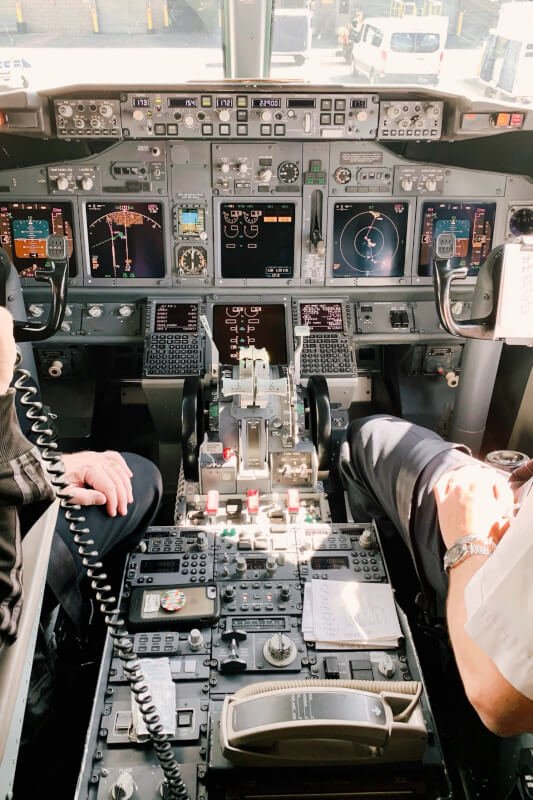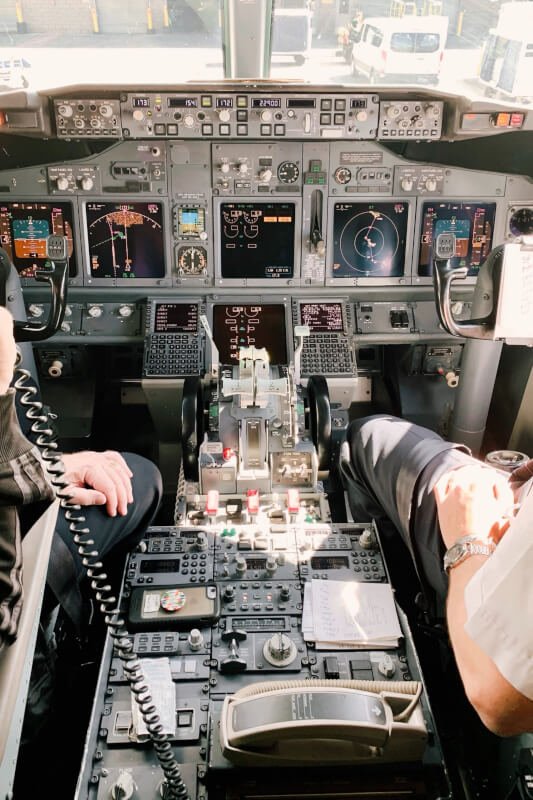Have you ever wondered about the different flight modes available in RC quadcopters? Whether you’re a beginner or an experienced RC pilot, understanding these flight modes is crucial for achieving precise control and maneuverability in the air. In this article, we will explore the various flight modes that you can find in RC quadcopters, helping you take your flying skills to new heights. So, let’s embark on this exciting journey and explore the fascinating world of RC quadcopter flight modes together!

1. Manual Mode
What is Manual Mode?
In Manual Mode, you have complete control over your RC quadcopter. This means that you are responsible for controlling the throttle, the direction, and the stabilization of the drone. In this mode, the drone does not have any assisted flight features and relies solely on your input.
How does Manual Mode work?
When you switch your quadcopter to Manual Mode, you are essentially turning off all the autonomous flight features. You become the pilot and have to manually control the drone’s throttle, pitch, roll, and yaw using the remote transmitter. This mode gives you the freedom to perform intricate maneuvers and fly the drone in any way you desire.
Advantages of Manual Mode
The main advantage of Manual Mode is the freedom and precision it offers. By having full control over every aspect of the flight, you can fly the drone exactly how you want. This makes it perfect for experienced pilots who want to perform complex stunts, aerial photography, or explore new flying techniques. Manual Mode allows for maximum creativity and flexibility.
Disadvantages of Manual Mode
While Manual Mode provides ultimate control, it also requires a high level of skill and experience to fly the drone effectively. Without the assistance of flight stabilization systems, it can be challenging to maintain stability and keep the drone in the air. Beginners who are unfamiliar with the controls might find it difficult to adjust to Manual Mode and may risk crashing the drone if not handled properly.
2. Stabilize Mode
What is Stabilize Mode?
Stabilize Mode is a flight mode that uses the built-in gyroscope and accelerometer sensors of the quadcopter to provide stability and maintain a level flying position. This mode assists the pilot in controlling the drone by automatically adjusting the throttle and balancing the drone when the controls are released.
How does Stabilize Mode work?
When you activate Stabilize Mode, the quadcopter uses its sensors to detect any changes in orientation or tilt. It adjusts the motors accordingly to stabilize the drone and keep it level. This allows you to release the controls and the drone will hold its position until you make further adjustments.
Advantages of Stabilize Mode
Stabilize Mode is an excellent option for beginner pilots as it provides assistance in maintaining a level and stable flight. It helps to prevent sudden crashes or instability caused by inexperienced control inputs. This mode also allows for smoother and more controlled flights, making it easier to capture stable aerial footage or take clear photographs.
Disadvantages of Stabilize Mode
One main disadvantage of Stabilize Mode is that it does not provide any altitude hold feature. This means that you still need to manually control the throttle to maintain the desired height, which can be tricky for beginners. Additionally, while Stabilize Mode offers stability, it does not compensate for external factors such as wind, making it more challenging to fly in adverse weather conditions.

3. Altitude Hold Mode
What is Altitude Hold Mode?
Altitude Hold Mode is a flight mode that automatically maintains a constant altitude for your quadcopter. This mode uses downward-facing sensors, such as barometers and optical sensors, to measure the distance between the drone and the ground and adjusts the throttle accordingly to maintain the specified height.
How does Altitude Hold Mode work?
When you engage Altitude Hold Mode, the quadcopter uses its sensors to determine its distance from the ground. It then adjusts the throttle to maintain a constant height, even if you release the throttle stick on the remote controller. This makes it easier to focus on controlling the direction and orientation of the drone without constantly worrying about the altitude.
Advantages of Altitude Hold Mode
Altitude Hold Mode simplifies the flying experience by automatically controlling the quadcopter’s altitude. This is especially useful for beginners who are still mastering throttle control, as it eliminates the risk of accidentally crashing the drone due to a sudden loss or gain in altitude. It also allows for more precise and stable camera shots or video recordings, as the drone can maintain a consistent height while in motion.
Disadvantages of Altitude Hold Mode
One disadvantage of Altitude Hold Mode is that it may not work effectively in low-light or low-contrast environments, as the downward-facing sensors rely on visual cues to measure the altitude. This mode also requires accurate calibration of the sensors before flight to ensure accurate height measurements. Additionally, altitude hold may not be as precise as manual control, especially in turbulent weather conditions or near obstacles.
4. GPS Hold Mode
What is GPS Hold Mode?
GPS Hold Mode utilizes the Global Positioning System (GPS) technology to maintain the quadcopter’s position in three-dimensional space. This mode allows the drone to maintain its position and altitude using GPS coordinates, providing greater stability and precision.
How does GPS Hold Mode work?
When GPS Hold Mode is activated, the quadcopter uses GPS satellites to determine its exact position and altitude. It constantly receives signals from at least four satellites and uses the data to stabilize its flight. GPS Hold Mode enables the drone to hold its position even in windy conditions or when external forces try to move it.
Advantages of GPS Hold Mode
GPS Hold Mode is particularly useful for aerial photography, videography, or any application that requires the drone to maintain a precise position and altitude. It allows for smooth and stabilized flights, making it easier to capture professional-quality footage. This mode also provides a safety feature by automatically returning the drone to its original takeoff position if the signal is lost or the battery is running low.
Disadvantages of GPS Hold Mode
One disadvantage of GPS Hold Mode is the dependence on GPS signal availability, as it requires a strong and stable connection to multiple satellites. Flying the drone in areas with limited satellite coverage, such as densely populated urban areas or near tall buildings, may hinder or limit the effectiveness of GPS Hold Mode. Additionally, initially acquiring GPS lock may take some time, resulting in a delayed takeoff or positioning.

5. Return to Home Mode
What is Return to Home Mode?
Return to Home (RTH) Mode is a flight mode that allows the quadcopter to automatically return to its original takeoff position using GPS coordinates. This mode is particularly useful when the drone is out of sight, the signal is lost, or when the battery is running low.
How does Return to Home Mode work?
When you activate Return to Home Mode, the drone uses its GPS positioning to determine the location of its takeoff point. It then calculates the most efficient route and autonomously flies back to that location. Return to Home Mode also takes into account the drone’s altitude, ensuring a safe landing by avoiding obstacles. Some quadcopters may also automatically initiate Return to Home if the signal is lost or the battery reaches a critically low level.
Advantages of Return to Home Mode
Return to Home Mode provides a safety net for both beginner and experienced drone pilots. In case the drone goes out of sight, is accidentally flown too far away, or the signal is lost, activating Return to Home allows for a safe and straightforward recovery. This mode also eliminates the worry of a low battery by automatically bringing the drone back to the original takeoff point before power runs out.
Disadvantages of Return to Home Mode
One potential disadvantage of Return to Home Mode is the possibility of obstacles along the drone’s flight path to the original takeoff point. If the drone is flying at a low altitude or in a densely populated area, there is a risk of collision with buildings, trees, or other objects. Additionally, factors such as wind speed and direction can affect the accuracy and efficiency of the return flight, potentially leading to deviations from the planned route.
6. Waypoint Mode
What is Waypoint Mode?
Waypoint Mode allows you to pre-program a specific flight route for your quadcopter by setting waypoints on a map or a mobile app. The drone will then autonomously follow the predetermined path, allowing for hands-free flying and the precise repetition of flight patterns.
How does Waypoint Mode work?
To use Waypoint Mode, you need to define a series of GPS coordinates or points of interest on a map or through a mobile app. Once the waypoints are set, you activate Waypoint Mode, and the quadcopter will automatically follow the programmed flight path. The drone will navigate from one waypoint to another, adjusting speed and altitude as specified, providing smooth and accurate flights.
Advantages of Waypoint Mode
Waypoint Mode is highly advantageous for aerial mapping, photogrammetry, or any application that requires precise and consistent flight paths. It allows for the duplication of flights for mapping or surveying purposes and ensures accurate data collection. Furthermore, Waypoint Mode enhances efficiency by automating flight routes, freeing the pilot to focus on capturing high-quality imagery or performing other tasks.
Disadvantages of Waypoint Mode
A potential disadvantage of Waypoint Mode is the limited flexibility during flight. Once the flight path is programmed, it may be challenging to make real-time adjustments or deviate from the planned route. Additionally, accuracy in reaching each waypoint depends on GPS signal quality, and obstacles such as tall buildings or trees may hinder the drone’s ability to reach certain waypoints safely.
7. Follow Me Mode
What is Follow Me Mode?
Follow Me Mode is a flight mode that allows the quadcopter to autonomously track and follow a moving object or person. Using GPS or visual recognition technology, the drone will lock onto the selected target and maintain a constant distance and position relative to it.
How does Follow Me Mode work?
When you activate Follow Me Mode, the drone uses GPS or visual recognition technology to track and follow a specific object or person. It maintains a constant distance and adjusts its position to keep the target in frame. This mode allows for dynamic and hands-free capturing of footage, making it ideal for action sports, outdoor activities, and filming yourself while on the go.
Advantages of Follow Me Mode
Follow Me Mode offers a unique and immersive perspective, allowing for captivating aerial footage without the need for an additional pilot. It enables you to capture dynamic shots while engaging in activities such as mountain biking, skiing, or running, providing a truly hands-free filming experience. This mode also enhances safety by keeping the drone at a safe distance from the tracked subject, reducing the risk of collisions.
Disadvantages of Follow Me Mode
One disadvantage of Follow Me Mode is the complexity and accuracy of tracking a moving subject. GPS-based tracking may have limitations, especially in densely populated areas or environments with poor satellite coverage. Visual recognition technology can face challenges in maintaining tracking reliability if the subject is obstructed or moves too quickly. Furthermore, the drone’s speed and agility may not match that of the target, resulting in occasional loss of tracking or positioning errors.
8. Circle Mode
What is Circle Mode?
Circle Mode allows the quadcopter to autonomously fly in a circular pattern around a fixed point of interest. This mode is commonly used for capturing panoramic shots, creating dramatic videos, or showcasing a specific location from different angles.
How does Circle Mode work?
To engage Circle Mode, you select a fixed point or object as the center of the circle. The drone will then fly in a circular path around the chosen point, maintaining a constant distance and speed. This allows for smooth and consistent rotations, capturing stunning aerial footage or imagery from a unique perspective.
Advantages of Circle Mode
Circle Mode simplifies the process of capturing cinematic shots by automating the circular flight path. It ensures smooth, consistent rotations around the subject of interest, eliminating the need for manual control and reducing the risk of jerky movements. This mode is particularly effective for showcasing landscapes, architectural structures, or any subject that benefits from a panoramic or 360-degree viewpoint.
Disadvantages of Circle Mode
One potential disadvantage of Circle Mode is the limited control over the flight path once engaged. The automated circular flight may not perfectly align with the desired viewpoint or composition, requiring additional adjustments or multiple attempts to capture the desired shot. Additionally, as the quadcopter flies in a circular path, it may face challenges in windy conditions, resulting in potential variations in speed or inconsistency in maintaining the desired distance from the center point.
9. Acro Mode
What is Acro Mode?
Acro Mode, also known as Acrobatic Mode or Rate Mode, is a flight mode that provides full manual control over the quadcopter without any stabilization assistance. In this mode, the drone responds directly to the pilot’s control inputs, allowing for advanced maneuvers, flips, rolls, and aerobatic stunts.
How does Acro Mode work?
When you switch to Acro Mode, all flight stabilization features are disabled, and the quadcopter responds solely to the pilot’s inputs. This mode is designed for experienced pilots who want complete control over the quadcopter’s movements. It requires precise throttle, pitch, roll, and yaw control to perform complex maneuvers and aerobatics.
Advantages of Acro Mode
Acro Mode is highly favored by experienced pilots who enjoy pushing the limits of their quadcopters and performing aerobatic stunts. This mode allows for intricate control over the drone’s movements, making it possible to execute precise flips, rolls, and other advanced maneuvers. Acro Mode provides a thrilling and challenging flying experience that demands skill and finesse.
Disadvantages of Acro Mode
The main disadvantage of Acro Mode is the high level of skill and experience required to fly the quadcopter manually. Without any stabilization assistance, it can be difficult to maintain stability and control during flight. Acro Mode is not recommended for beginners or pilots who are not comfortable with the manual control of the quadcopter, as it can result in crashes or loss of control.
10. Sport Mode
What is Sport Mode?
Sport Mode, also known as Expert Mode or Attitude Mode, is a flight mode that provides a balance between manual control and stabilization assistance. This mode is designed for pilots seeking a faster and more responsive flying experience without completely disabling the flight stabilization systems.
How does Sport Mode work?
By activating Sport Mode, the quadcopter’s flight stabilization systems are partially engaged. This allows for increased agility and responsiveness while still providing some level of stability. Sport Mode often increases the maximum speed and responsiveness of the quadcopter, making it ideal for racing or capturing fast-action footage.
Advantages of Sport Mode
Sport Mode offers an exhilarating flying experience with increased speed and maneuverability compared to the standard flight modes. It allows you to explore the full potential of your quadcopter, perform quick turns, and capture fast-action footage without compromising stability completely. Sport Mode is particularly appealing to pilots interested in racing or those seeking a more dynamic flight experience.
Disadvantages of Sport Mode
One disadvantage of Sport Mode is the reduced stability compared to other flight modes. Although the quadcopter still benefits from some stabilization assistance, it is less pronounced, requiring the pilot to have a higher level of control input accuracy. This mode is not recommended for beginners or pilots who are not yet comfortable with manual control, as it can result in faster and potentially riskier flights.
In conclusion, RC quadcopters offer a wide range of flight modes that cater to different flying preferences and applications. Each mode provides unique advantages and disadvantages, allowing pilots to choose the most appropriate mode based on their skill level, desired flight characteristics, or specific requirements. Whether you prefer the complete freedom of Manual Mode, the stability of Stabilize Mode, or the automation of GPS-based modes, there is a flight mode available to enhance your flying experience and capture stunning aerial footage. It is crucial to familiarize yourself with each mode’s operation and limitations to ensure safe, enjoyable, and successful flights with your RC quadcopter.


